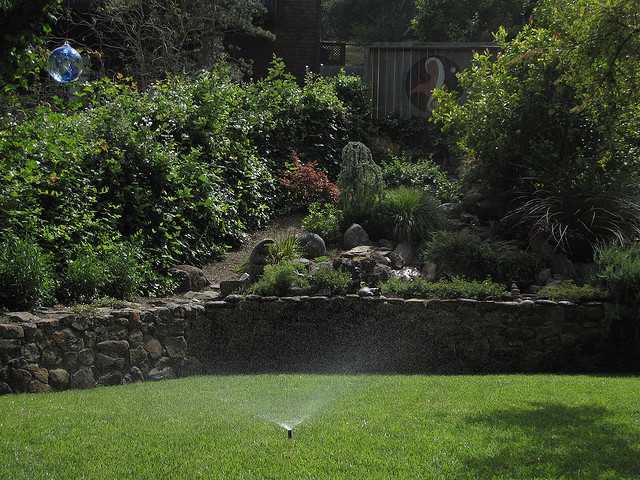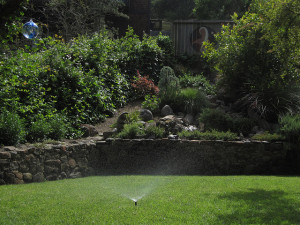As the temperatures cool down and rainstorms start appearing, you may think that you can just turn off the sprinklers and not worry about your grass any more. However, you should indeed keep them on and water your lawn as needed in autumn.
Why Water Your Lawn in Fall?
Autumn is a great time for growth in your garden. Many grasses that are used for lawns are cool season (for example, Kentucky bluegrass and fescue,) so they enjoy the milder temperatures present at this time. Plants will produce some new growth and roots as they prepare for winter. It is important that your grass receives adequate nutrients and water during this time.
While the rains that start to fall more frequently during this season will help take care of your plant’s needs, it is important to make sure that they are consistently watered every week. If you depend solely on precipitation, there may be weeks with little or no rain and your lawn will be left thirsty during this important period of growth.
How Much Should I Water?
This will depend, of course, on how rainy this fall proves to be. During summer the general rule is about an inch per week, but the grass will start to need less in the weeks before winter arrives. Watch the weather forecasts to get an idea of what the coming days may bring. Keep a rain gauge in your landscape so that you can see how much is actually falling on your lawn.
Adjust your sprinklers as needed so that you do not accidentally overwater your grass. You may, in the end, not need to water much or at all, but it is better to be prepared for the possibility and help your lawn stay as healthy as possible.
Image by fabola under a Flickr Creative Commons Attribution-ShareAlike License




